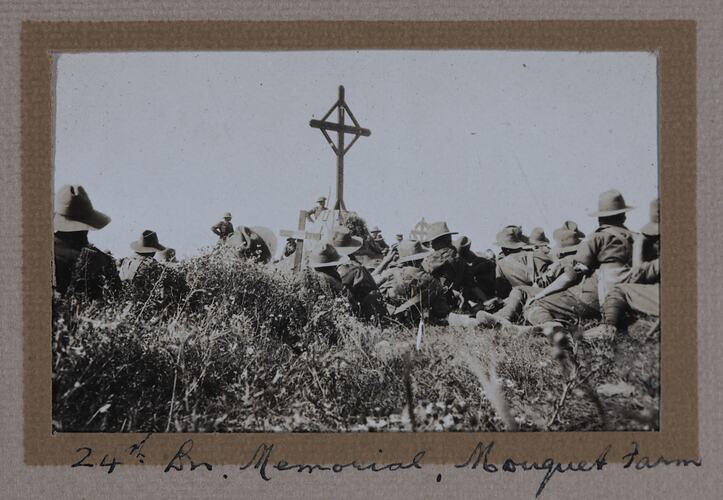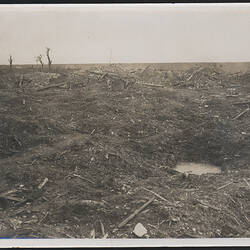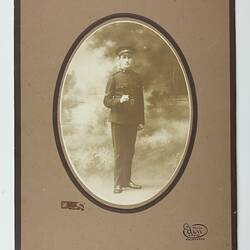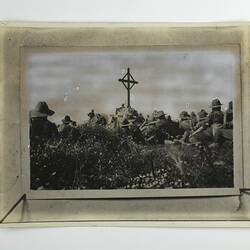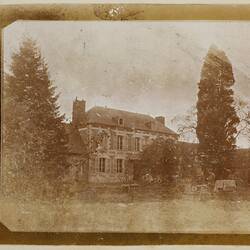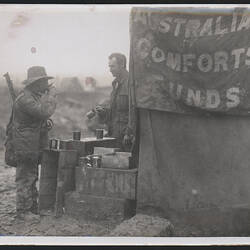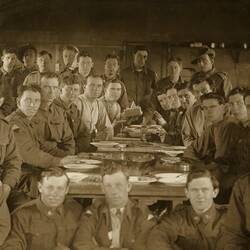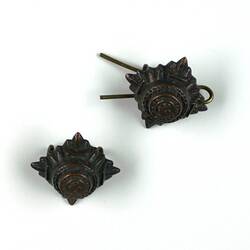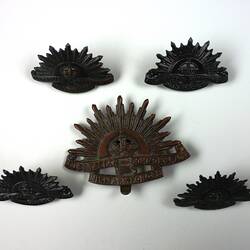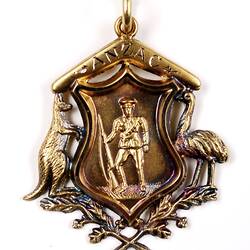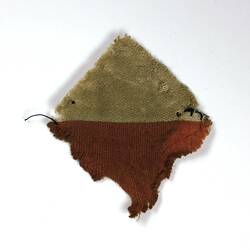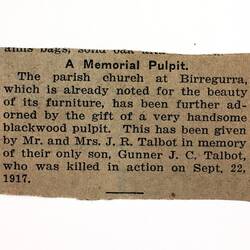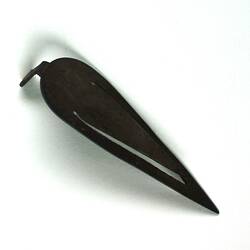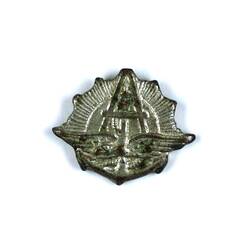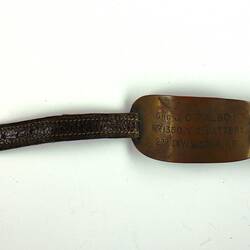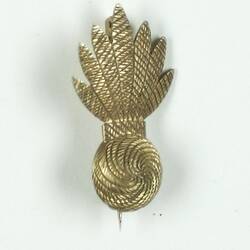'Tanks wallowed about in the mud, pack horses and mules laden with shells trailed across the fields, and the guns boomed and flashed all night.' Sergeant W.J. Harvey, 24th Battalion AIF, November 1916.
The lead-up to winter in the autumn of October - November 1916 in the battlefields and trenches around the Somme was one of the worst times of the war for Victoria's 24th Battalion, AIF. Along with Australia's other military units, the Battalion's situation on the Western Front changed dramatically, from bad to worse. The cold and increasingly muddy conditions added to the chaos and hardship of army life, for an already exhausted group of men.
The 24th Battalion was raised in Victoria, Australia, and formed a quarter of the 6th Brigade. Three brigades formed a division, and as part of the 2nd Division the 24th Battalion fought in Australia's major engagements of the Somme Offensive. Their losses were particularly high in ferocious engagements at Pozières and Mouquet Farm, where the 2nd Division suffered 6,848 casualties in just over a week of fighting. While the territory around Pozières and Mouquet Farm was considered strategically essential, the battles were hard-won. Given the catastrophic losses of life, the number of wounded and missing, and the years of ongoing strain to the living, some would argue that there were no winners in this chapter of World War I.
Life at the front for the men of the 24th Battalion was life-threatening, but time in the rear 'rest' zones was not much of a relief. Shelling rained down upon the men when opposition guns detected any activity - even small acts such as building a fire to keep warm or to dry out clothes. Supplies were in constant need and the recuperating men were frequently called upon to deliver heavy ammunition, food and tools to replenish the fighters at the frontlines. Bearing packs weighing more than 30 kilos, officers and privates alike quickly sank in the mud - all while trying to find their way through collapsed trenches and the bodies of killed soldiers.
One of the most dangerous roles was that of stretcher-bearer. Each Australian battalion started with 16 stretcher-bearers; by the end of the first week in the Somme Offensive, the 24th Battalion had just four left. Officers, corporals, lieutenants and privates all volunteered for the deadly work - ferrying the wounded from the battlefield to the casualty clearing stations and field hospitals. Moving back and forth across the boggy fields left the bearers and the wounded openly exposed to machine gun fire, snipers and the mass shelling of large mortars and heavy field guns. Eventually, when it was time to rest, they sunk to the wet ground, to sleep, without blankets, in near freezing temperatures.
The Somme Offensive employed a scale of weapons never seen before - which decimated the landscape of France. Each side used heavier guns and larger shells than in previous wars, and the British use of subterranean mines created the largest explosions, and craters, on record at the time. The pulverised villages and landscapes witnessed by the soldiers on the Somme are hauntingly depicted in photographs, poems, sketches, letters and diaries held by Museum Victoria, providing a direct link to Victorian soldiers' war-time experience.
Museum Victoria holds nearly 100 photographs depicting the 24th Battalion at work, at rest and in transit. Gunner James Clive Talbot is remembered though personal mementoes including an identity tag and bracelet, an Australian rising sun badge and a battalion colour patch. Although he survived the Somme he was killed the following year during in the Third Battle of Ypres, and the Talbot collection includes a female relative's badge, a Roll of Honour certificate and a newspaper clipping about a church pew in his memory.
Museum Victoria's collection also contains 24th Battalion articles such as concert programmes, Christmas cards, sergeants' mess hall menus, and issues of The Red & White Diamond, a periodical created and used by the Battalion in the trenches. Additional information survives in the four volumes of the personal diary of Corporal Gilbert Payne Mulchay. Gilbert was a commissioned officer assigned to the 6th Brigade Headquarters, and had frequent interactions with the 24th Battalion. He was often invited to share their mess hall, and described them as '... a decent lot of chaps, and their mess tip-top.' This was, of course, a relief from the hell that was outside their door.
References
Australian War Memorial London, website: http://www.awmlondon.gov.au/australians-in-wwi
Australian War Memorial, World War I 1914-1918, website: https://www.awm.gov.au/atwar/ and https://www.awm.gov.au/unit/U51464/
Carlyon, L. (2006) The Great War. Sydney: Pan Macmillan Australia.
Harvey, W.J. (1920) The Red and White Diamond: Authorised History of the 24th Battalion Australian Imperial Force. London: Naval and Military Press. p.120.
Lych, E.P.F. (2008) (2nd edn.) Somme Mud. Sydney: Random House.
Mulchay, G.P. (1917) 'WWI Diary of Sergeant Gilbert Payne Mulcahy, Volume 2, France'. Museum Victoria Military Collection, Object No: ST 037406. Entry dated 02/04/1917.
More Information
-
Keywords
-
Localities
-
Authors
-
Article types
